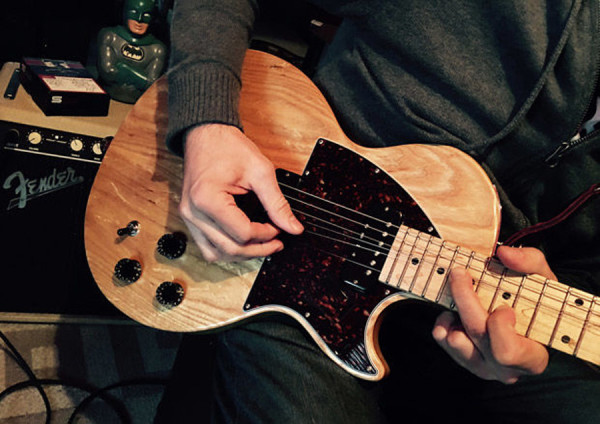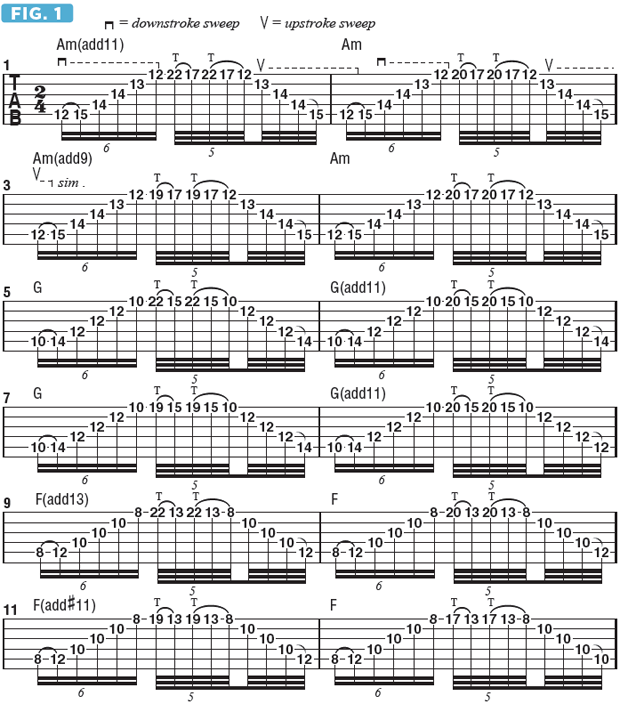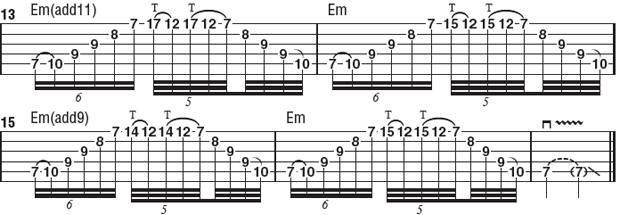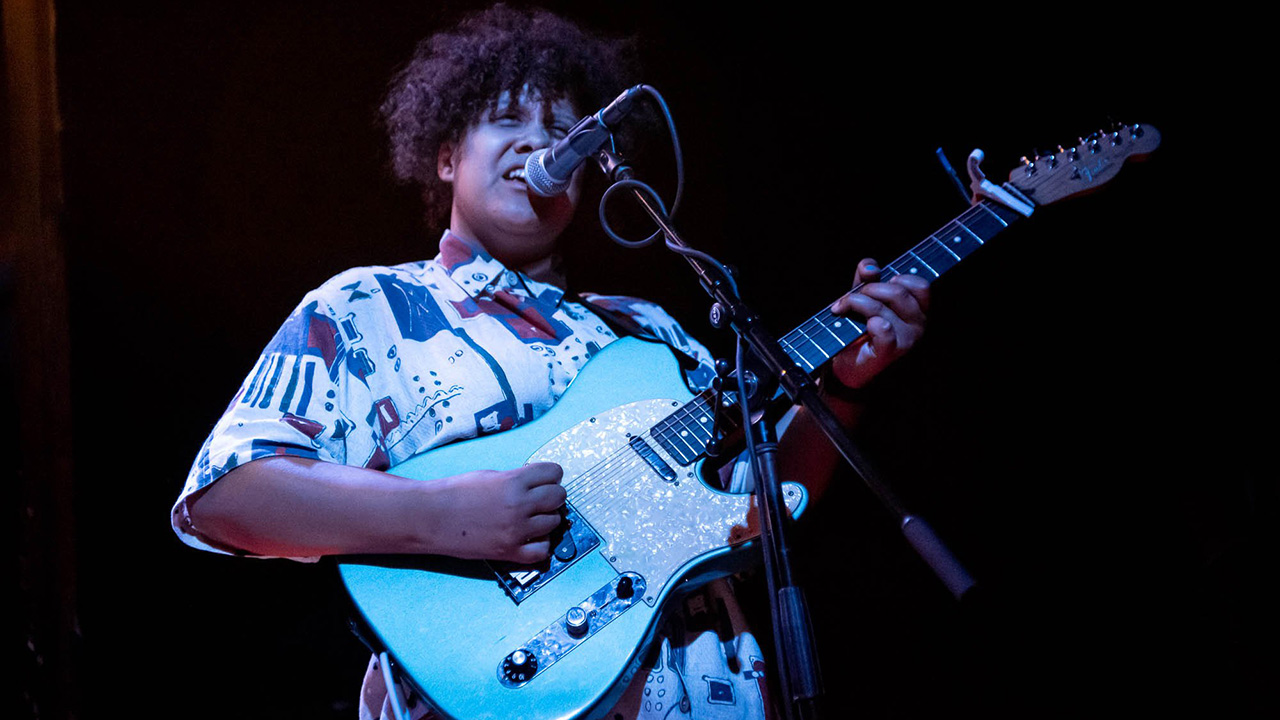Combining Sweep Picking and Fretboard Tapping to Forge Long, Flowing Melodic Phrases

Some of my favorite musical sounds are those that consist of long, flowing arpeggios, whether they are present in rock, classical, electronic music or metal. The manner by which most guitar players execute lengthy arpeggiated lines is by using sweep picking, wherein the pick is dragged in a single motion across two or more adjacent strings using either a downstroke or an upstroke.
I like to expand on the standard sweep-picking approach by adding fretboard taps at the highest part of the phrase. As a right-handed player, I use my left hand for fretting and my right hand for picking and tapping. I like to make a correlation between the guitar and the piano, in that my left hand provides the majority of the notes of the arpeggio, as is often the case when playing long arpeggios on the piano, and my right hand likewise adds higher melodic notes, via fretboard tapping.
For those new to the fretboard tapping technique, a note is sounded by hammering onto a string with either a pick-hand fingertip or the edge of the pick, after which that note is then pulled off to a lower note on the same string, which is fretted conventionally. I myself prefer to tap with the edge of my pick, à la Randy Rhoads.
FIGURE 1 is an uninterrupted 16-bar run that progresses through a series of sweep-picked arpeggios to melodically imply a chord progression: Am G F Em. I ascend and descend each arpeggio four times and incorporate tapping to sound the highest notes, which I vary each time to add melodic interest and harmonic color to the run.
The two minor arpeggios, Am and Em, are performed identically but five frets apart. Likewise, the two major arpeggios, G and F, are also executed identically, two frets apart. Each arpeggio begins with a downstroke followed by a hammer-on, after which I continue the downstroke across all of the strings. After sounding the two taps and pull-offs, I descend the arpeggio using an upstroke sweep.
I recommend practicing the sweeps alone first before adding the taps. Try to keep the fretted notes separate and distinct by “getting off them” as soon as they’re picked or hammered. These techniques aren’t as difficult to perform as they may seem at first, but they will definitely take practice to master and integrate, so be persistent and patient.


Get The Pick Newsletter
All the latest guitar news, interviews, lessons, reviews, deals and more, direct to your inbox!










